
| Yellow Migrant (previously known as Callidryas gorgophone) COLIADINAE, PIERIDAE, PAPILIONOIDEA | (donherbisonevans@yahoo.com) and Stella Crossley |
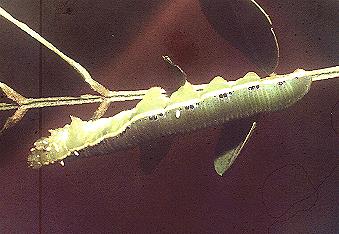 |
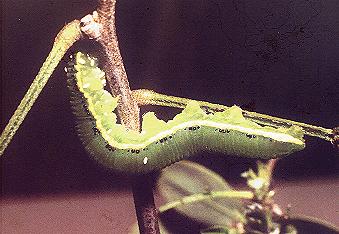 |
(Specimen: courtesy of Helen Schwencke, Butterflies and Other Invertebrates Club)

| Yellow Migrant (previously known as Callidryas gorgophone) COLIADINAE, PIERIDAE, PAPILIONOIDEA | (donherbisonevans@yahoo.com) and Stella Crossley |
 |
 |
The Caterpillar is dark green, with a pale yellow dotted stripe each side decorated with groups of blue dots. The Caterpillar has a pale green head, and grows to a length of about 4 cms.

The caterpillar feeds on species from the family CAESALPINIACEAE including:
The caterpillar rests with its head and thorax lifted in the air, resembling a twig.
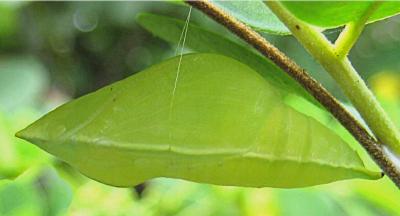
The pupa is suspended from a twig of the foodplant by cremaster and girdle. It has a length of about 3 cms.
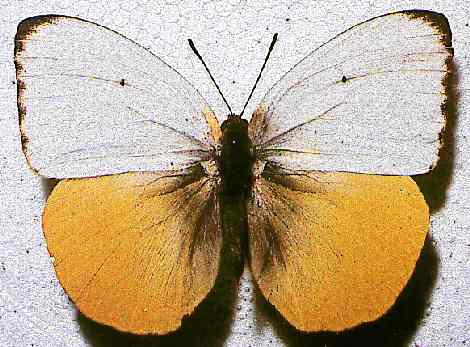
The adults have a wingspan of about 6 cms. The male has forewings that are white with black edges, and has hindwings that are deep yellow.
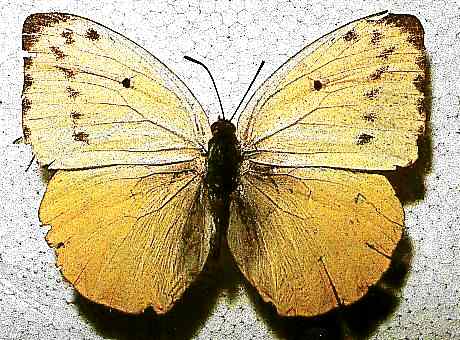
The female has forewings that are pale yellow, with a subterminal arc of brown spots. The hindwings of the female are yellow.
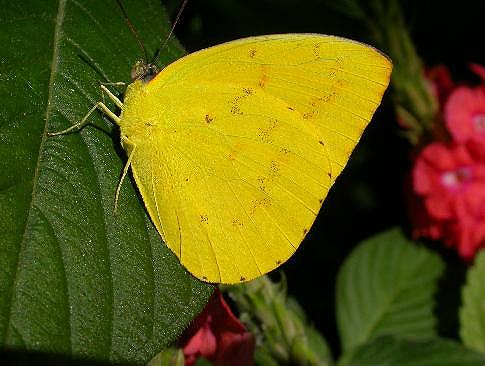
The wings of the male are yellow underneath, with dark spots that can have white centres.

The female undersides are similar to those of the male, but the markings are more intense than those of the male.
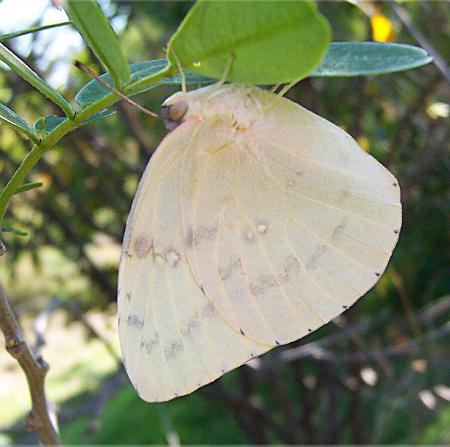
The butterflies have a pale form : hinda
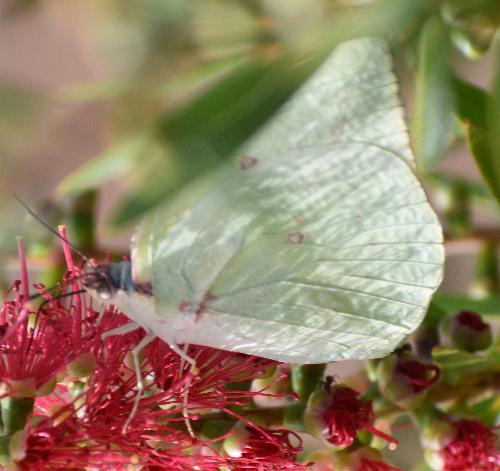
This pale form can have a single pink ring under the hindwing.
 two eggs, slightly magnified Photo: courtesy of Ross Kendall, Indooroopilly, Queensland | 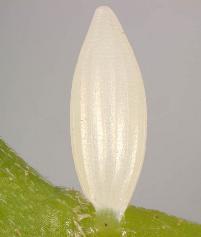 one egg, highly magnified Photo: courtesy of Ken Walker, Brisbane, Queensland |
The eggs are off-white, and spindle-shaped, with a dozen or so ribs, and with a width of about 0.5 mm, and a height of about 1.8 mm. They are laid singly on leaves of a foodplant.
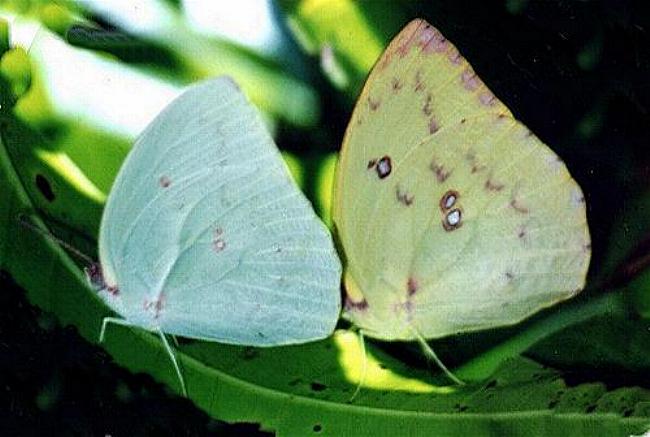
The species occurs in the eastern Pacific, including:
as well as in Australia in:
Live butterflies of this species may be purchased for release at weddings etc.
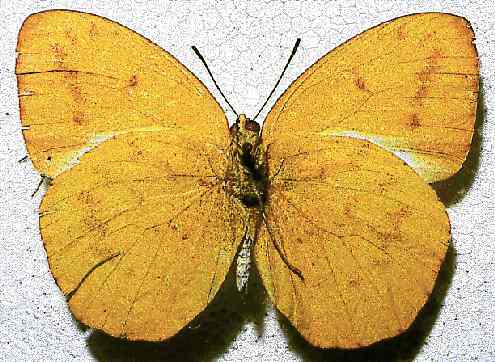
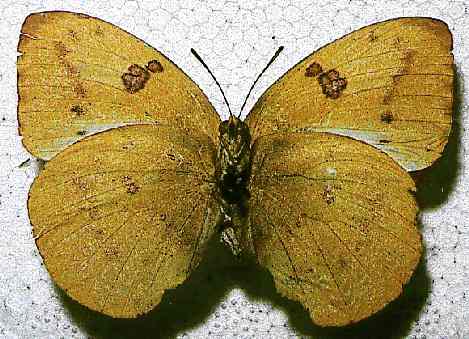
female underside
(Specimens: courtesy of the
The Australian Museum)
Further reading :
Jean-Baptiste Alphonse Dechauffour de Boisduval,
Species Général des Lépidoptéres,
Histoire naturelle des insectes,
Volume 1 (1836), pp. 632-633, No 26.
Michael F. Braby,
Butterflies of Australia,
CSIRO Publishing, Melbourne 2000, vol. 1, pp. 294-296.
Frank Jordan & Helen Schwencke,
Create More Butterflies : a guide to 48 butterflies and their host-plants
Earthling Enterprises, Brisbane, 2005, pp. 52, 65.
John T. Moss & Wesley Jenkinson,
A comparison of the Yellow Migrant, Catopsilia gorgophone
(Boisduval, 1896) and the Orange Migrant, C. scylla
(Linnaeus, 1764) [Lepidoptera,: Pieridae]
with comment on evidence for natural hybridisation,
Butterflies and Other Invertebrates Club,
Metamorphosis Australia,
Issue 62 (September 2011), pp. 1, 4-8.
 caterpillar |  butterflies |  Lepidoptera |  moths |  caterpillar |
(updated 24 September 2011, 23 July 2024)